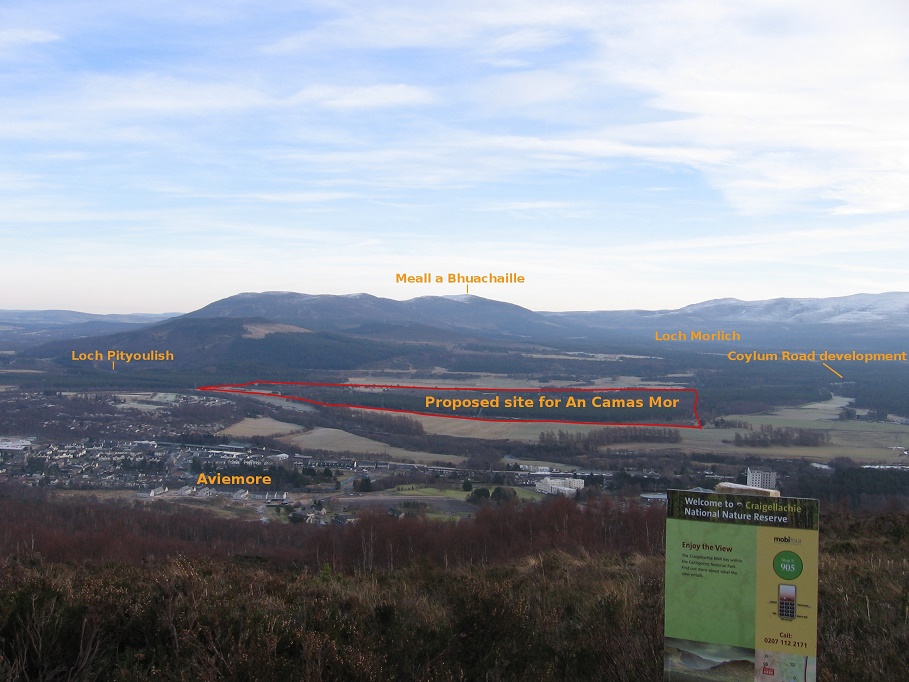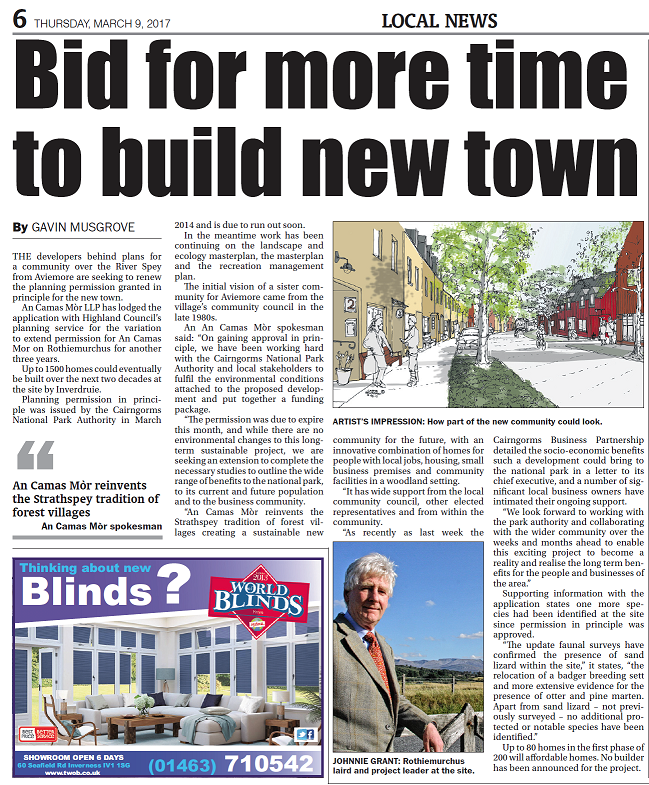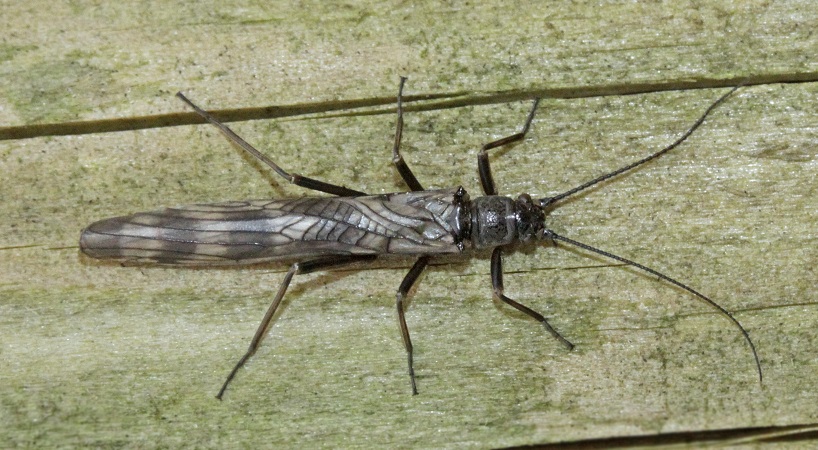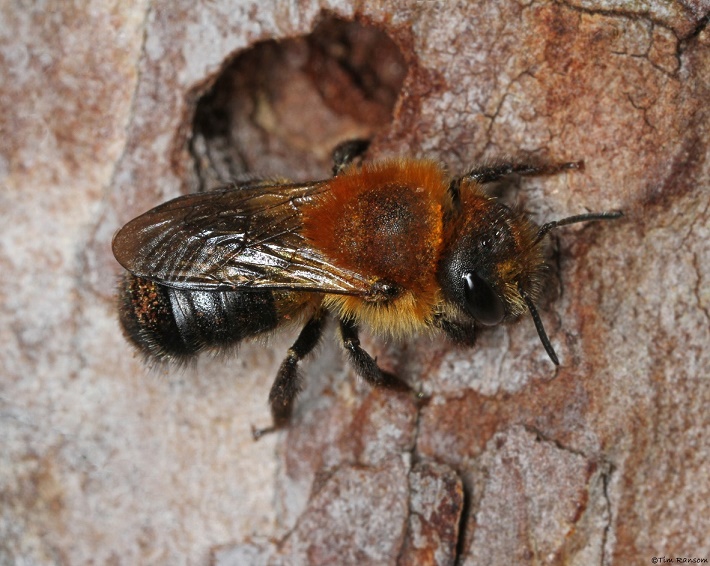
By Save the Cairngorms Campaign
In 2014, the CNPA gave planning approval for what is, in effect, a new town of 1500 houses in the National Park. The site on the east side of the River Spey opposite Aviemore, is owned by John Grant of Rothiemurchus and is land of high conservation and landscape value. This development would double the population of Aviemore which is currently around 2800.


The An Camas Mor proposal is nothing if not controversial. All the more reason you would think for the developers (An Camas Mor Limited Liability Partnership) behind the project to ensure that the planning conditions attached to the permission in principle (PIP) granted in March 2014 are complied with.
The very nature of the PIP is that it was subject to conditions requiring the applicant to submit various details for approval by the CNPA within three years of the permission. As only the principle of development is established by a PIP, the details requiring further approval are comprehensive and fundamental, dealing with issues such as phasing, layout, design, access, landscape and ecology.
Yet, three years after the PIP was granted, none of the details subject to the conditions have been approved. Only one such application was made to the CNPA but had to be withdrawn because it was so inadequate. As a result the PIP has now lapsed and can no longer be implemented because the further applications required by the conditions have not been made within the statutory time period.

Time limits on planning permissions are imposed for good reason; to ensure that development is progressed promptly whilst the planning policies under which it was granted are still relevant. Permissions not implemented in good time lapse and are then incapable of being implemented. This is to prevent development from being started some years later when planning policy may have changed.
This is the case with An Camas Mor. The current Cairngorms National Park Local Development Plan was adopted in March 2015. The PIP was granted by reference to planning policies in the previous local plan that is now out of date and superseded.
Therefore, if the An Camas Mor development is to be pursued a new planning application for permission in principle will need to be made, and determined by CNPA in accordance with the up to date planning policies of the current local plan. At least that is what planning law, policy and common sense would suggest.
Instead, the developers are trying a more expedient route, known as a Section 42 Application, to vary one of the conditions of the PIP in an attempt to gain a new permission with new time limits. Even though this type of application should not be used to vary a permission that can no longer be implemented, and has a dubious legal basis in these circumstances, the CNPA has registered it as a valid application under reference 2017/0086/DET (see here).
What an impartial observer might find even more surprising is that this back door route to getting the developer out of a hole of its own making seems to be based on the advice of CNPA officers. Yet the condition of the PIP that the developer now seeks to remove via its Section 42 Application is perhaps the most fundamental of all; the condition that requires a full review of the impact of the first 630 dwellings before further development can commence.
This full review was deemed essential by CNPA officers and its planning committee at every stage of the lengthy consideration of the proposal, but the CNPA may now be about to abandon this critical check on a development that remains highly controversial and for which the developers have been unable to provide any details worthy of approval.

Due to its particularly sensitive location and likely impacts, the An Camas Mor new town was only granted planning permission in principle subject not only to the full review at an early stage but also regular monitoring and appropriate phasing thereafter. Perhaps even more fundamentally, such an apparently incongruous development only gained planning permission at all because it promised to be an exemplar of a new, sustainable and self-contained community that would provide appropriate housing, employment, services and amenity for local people. How else could a new town in Scotland’s flagship National Park possibly be considered, let alone justified?
If the developers cannot even ensure that timeous applications are made for detailed approval in accordance with conditions, what chance is there of any development ever taking shape as promised with the necessary environmental protection and enhancement?
The CNPA has a statutory duty to act as a planning authority in the public interest and to ensure that the An Camas Mor development either fulfils its promised objectives entirely or does not happen at all. That is why the CNPA imposed the conditions it did on the PIP and why it should stand by those conditions and reject any attempt to weaken them.
The Section 42 Application should be refused. The only option now for the developers, if they intend to proceed at all, is to submit a new application for permission in principle to be considered on its merits.
Representations on the Section 42 Application ( 2017/0086/DET), which can be viewed on the CNPA’s website, must be made by 13 April 2017. The PIP is also on the CNPA website under reference 09/0155/CP.

Addendum
The Badenoch and Strathspey Conservation Group has produced a photo album of the An Camas Mor site with over 4500 photos, mostly of stunning insect species. It illustrates the fantastic animal life that is out there for people to enjoy and implicitly raises the question, should our National Parks really be developing new towns? Highly recommended (see here).
